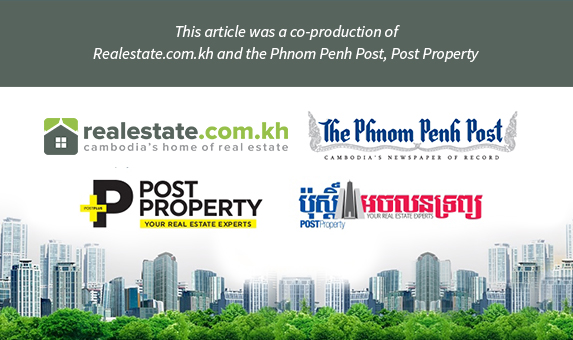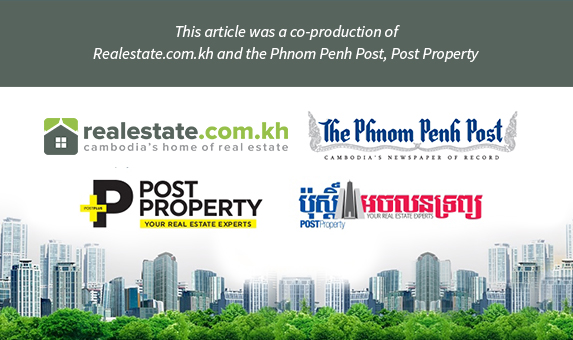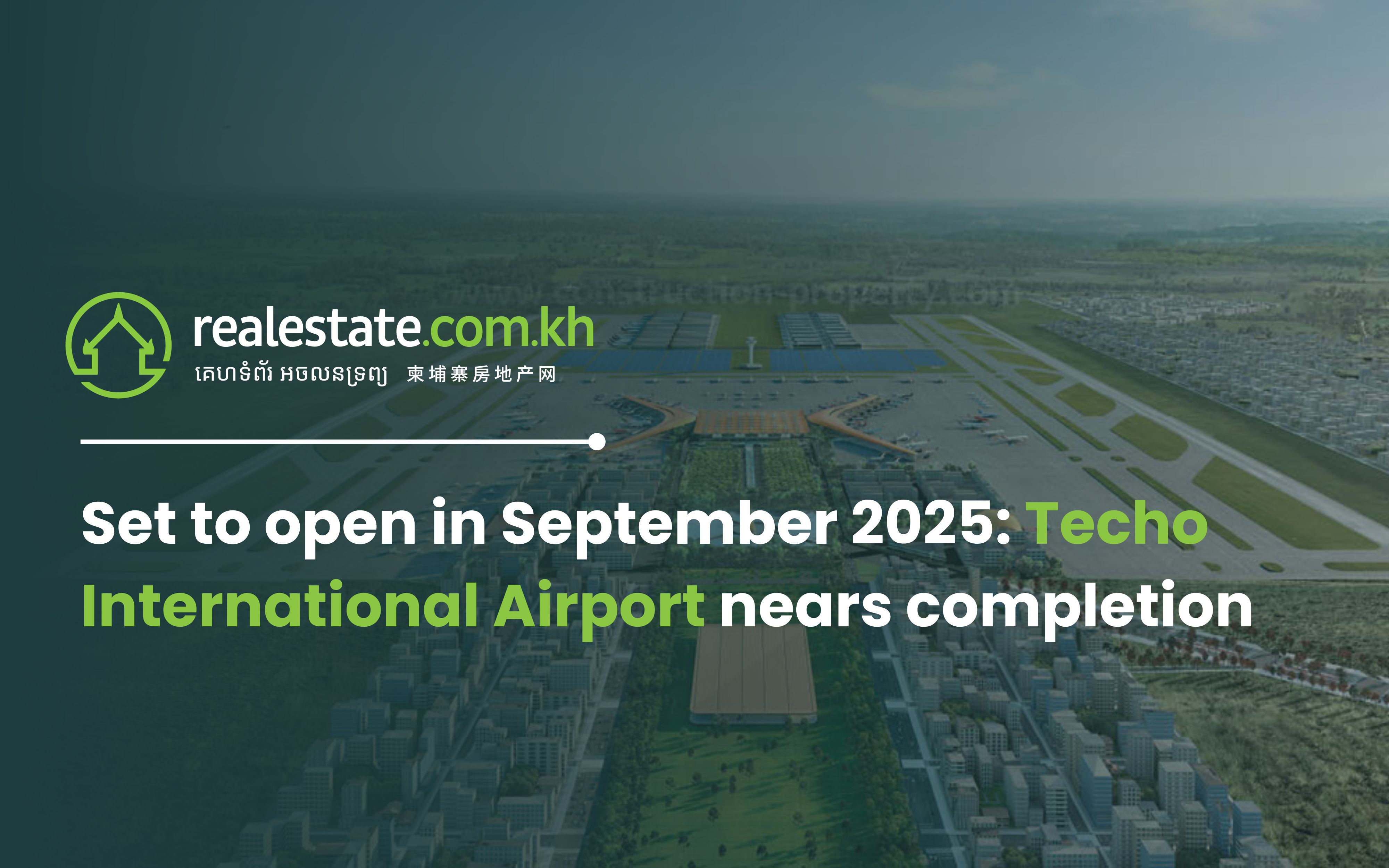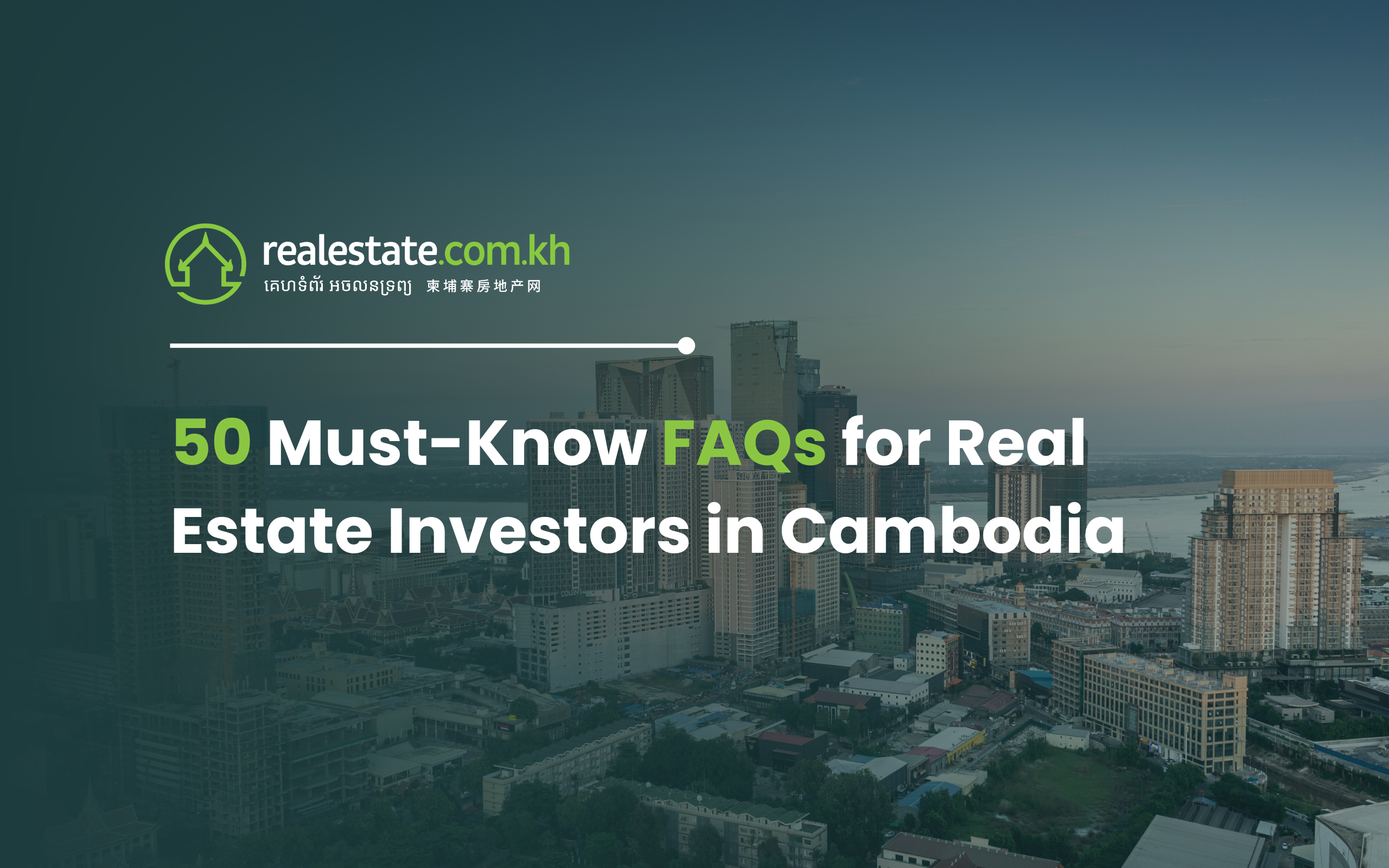Local property developer, WorldBridge Land, Co. Ltd., and Singapore-based construction company, Strait Construction Group Pte, Ltd, last week announced a $100 million Memorandum of Understanding on affordable housing with the government. Singaporean developer HLH Group Ltd also announced its entry into the Cambodian property market with the launch of CamHomes in June of this year, a real estate agency under the company, Public Housing Development (Cambodia) Ltd. While at the birth of both of these recent ventures, government representatives have announced their goals of developing policy for constructing public housing for low-income and lower middle-income earners in Cambodia, there has been no indication as of yet that these two recent agreements with private companies reflect this policy directly. Yet, a Google search reveals that the terms ‘affordable housing’ and ‘public housing’ have been used synonymously by local and regional media to describe the very same projects.
Per definition however, ‘public housing’ refers to a form of housing tenure in which the property is owned by a government authority.
Supporting a lack of clarity surrounding the government’s direct ownership of new housing projects, at last week’s signing of the Memorandum of Understanding between the Government, WorldBridge and Strait Construction, Im Chunnlim, senior minister of the Ministry of Land Management, Urban Planning and Construction, reiterated that Cambodia’s government has drafted a policy on housing which indicates seven choices to solve housing issues, one of which shall be a collaboration with the private sector. Im added that in the draft policy, companies can give part of their housing to the government to sell to the middle class; the government can give a piece of land to a developer to build housing for the middle and lower class by requiring them to sign up for a long-term mortgage without interest; or the government can allow for infrastructure and social development in the case that the developers have a piece of land or enough capital to invest. But in return developers must give a certain area back to the government to use as housing for the middle and lower class. Yet despite this statement, there has been no public clarification as to whether any such direct terms were stipulated in last week’s MoU. Upon further email enquiry yesterday, WorldBridge chairman Oknha Sear Rithy told Post Property that his investment had already shaped into a construction plan saying there would be two townhouse projects in the southwest of Phnom Penh and they “should finish by the end of 2017”. The land, he added, was owned by the developer and not the government. While the investment volume of $100 million and the construction details are clear, the price of individual units, the amount of subsidies going into them and who will pay the subsidies is not, according to the Oknha, who added that these questions are currently being discussed. [caption id="attachment_79077" align="aligncenter" width="553"] Public housing in Hong Kong.[/caption] What also remains unclear is the mechanism, through which subsidies could be raised. An employee of WorldBridge mentioned to Post Property on the phone that taxation relieves on imported construction material could be a form of government subsidy that would pay for the discount on the original price per housing unit. In addition to that, construction permits could be granted to the developer for free. Whether these subsidy mechanisms – which were not brought up in senior minister Im’s rundown of subsidy solutions – would suffice for subsidies in housing units, Oknha Rithy said he could not comment until “after our team finalised it”. Other than knowing how much a housing unit could cost and how it could be subsidised, it would be important to decide which people in need would benefit from the programme and if the administration to decide would be in place. To that the Oknha said: “Next year we will start the first project. While the scheme of subsidies is still in discussion, I hope to have concrete information by the end of this year.” Considering all the uncertainties revolving around the MoU, a successful partnership between the private sector and government to build public housing seems up in the air. If the government does not have the means to pull their weight in the scheme, WorldBridge could at least complete the project and see the housing units without subsidies, according to Oknha Rithy. “Yes, we can stand alone but I am sure the government is supporting us and will cooperate with us,” he told Post Property yesterday. On Saturday September 26, Deputy Prime Minister Sar Kheng, spoke at the launch of the CamHomes showroom. He called CamHomes D’Seaview development in Sihanoukville a step in the right direction to home ownership, saying, “[In the] Cambodia context, a supply of contemporary housing to accommodate growing middle income populations is still one of the major developmental challenges facing the Royal Government of Cambodia.” He went on to say that CamHomes was said to fall in line with the National Public Housing policy currently in the process of development by the Ministry of Land Management, Urban Planning and Construction – a plan which he expects to see the results of in the next few years. While CamHomes’ approach may be in line with a policy that may take years to materialise, one has to note that CamHomes is a developer realising its project with private sector funds. Deputy Prime Minister Sar Kheng also noted at the CamHomes launch that while the construction and property sector has substantially relied on the private sector for investment projects, the government has been actively promoting an investment climate conducive to the growth of the market. Dr Peng Hong Socheat Khemro, general director of the Ministry’s Housing Department for the Ministry of Land Management, Urban Planning and Construction, officially spoke with Post Property in May 2015 regarding the planned public housing policy. When asked about the progress of this strategy in May, Dr Peng Hong Socheat Khemro said that “Our first job is to develop the mechanism. Our second job is to educate national, provincial and commune-level government officials about what we are trying to do. We will move on to the construction trial stage only when we have the mechanism and the ability, which will possibly begin in 2017 or 2018.”
Public housing in Hong Kong.[/caption] What also remains unclear is the mechanism, through which subsidies could be raised. An employee of WorldBridge mentioned to Post Property on the phone that taxation relieves on imported construction material could be a form of government subsidy that would pay for the discount on the original price per housing unit. In addition to that, construction permits could be granted to the developer for free. Whether these subsidy mechanisms – which were not brought up in senior minister Im’s rundown of subsidy solutions – would suffice for subsidies in housing units, Oknha Rithy said he could not comment until “after our team finalised it”. Other than knowing how much a housing unit could cost and how it could be subsidised, it would be important to decide which people in need would benefit from the programme and if the administration to decide would be in place. To that the Oknha said: “Next year we will start the first project. While the scheme of subsidies is still in discussion, I hope to have concrete information by the end of this year.” Considering all the uncertainties revolving around the MoU, a successful partnership between the private sector and government to build public housing seems up in the air. If the government does not have the means to pull their weight in the scheme, WorldBridge could at least complete the project and see the housing units without subsidies, according to Oknha Rithy. “Yes, we can stand alone but I am sure the government is supporting us and will cooperate with us,” he told Post Property yesterday. On Saturday September 26, Deputy Prime Minister Sar Kheng, spoke at the launch of the CamHomes showroom. He called CamHomes D’Seaview development in Sihanoukville a step in the right direction to home ownership, saying, “[In the] Cambodia context, a supply of contemporary housing to accommodate growing middle income populations is still one of the major developmental challenges facing the Royal Government of Cambodia.” He went on to say that CamHomes was said to fall in line with the National Public Housing policy currently in the process of development by the Ministry of Land Management, Urban Planning and Construction – a plan which he expects to see the results of in the next few years. While CamHomes’ approach may be in line with a policy that may take years to materialise, one has to note that CamHomes is a developer realising its project with private sector funds. Deputy Prime Minister Sar Kheng also noted at the CamHomes launch that while the construction and property sector has substantially relied on the private sector for investment projects, the government has been actively promoting an investment climate conducive to the growth of the market. Dr Peng Hong Socheat Khemro, general director of the Ministry’s Housing Department for the Ministry of Land Management, Urban Planning and Construction, officially spoke with Post Property in May 2015 regarding the planned public housing policy. When asked about the progress of this strategy in May, Dr Peng Hong Socheat Khemro said that “Our first job is to develop the mechanism. Our second job is to educate national, provincial and commune-level government officials about what we are trying to do. We will move on to the construction trial stage only when we have the mechanism and the ability, which will possibly begin in 2017 or 2018.”





Comments